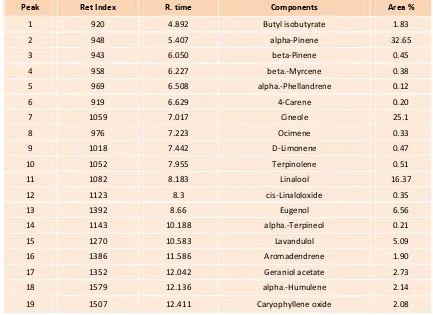“Formulation Design and Evaluation of Anti-Microbial Activity of Emulgel Containing Essential Oil of Myrtus communis L.” by Hiba Sabah Sabri, Wedad Kamal Ali, Baydaa Hameed Abdullah, Widad M. K. Al-Ani, Iraq.
Full text
Figure



Related documents
Strategies to affect loneliness/social connect- edness extracted from qualitative studies were analyzed as follows: (i) an initial list of two indicators of social
AD: Alzheimer disease; ADDIS: Aggregate Data Drug Information System; AT: Art therapy; ChEIs: Acetylcholinesterase inhibitor; CI: Credible intervals; CST + ChEIs: The combination
ABA method seems to have significantly improved social behaviors and reduced stereotyped behaviors in autistic people (Jif, 2010). In explanation of this finding
In summary, we conclude that vitamin E acts as a lipocalin antibiotic binding inhibitor, helping to increase the effective concentration of antibiotics around bacterial
The improved dispersion of CNWs provided higher modulus of the PLA composites at higher reinforcement loading and maintained the strain and stress at break of the composites
+++ Biomedical (health): sum of (1 problem, 0 no problem) no diagnosed, chronic medical conditions, no problems with activities of daily living, no psychiatric morbidity (GHQ-12 with
The objectives of the study were to assess the socioeconomic and demographic profile of pregnant women (primigravidae) in antenatal clinic located in a
22-23, 24-28 In Ethiopia, according Brhan Y et al 12 the prevalence of low vision based on presenting visual acuity is 3.7% 2.6% for urban and 3.8% for rural populations and